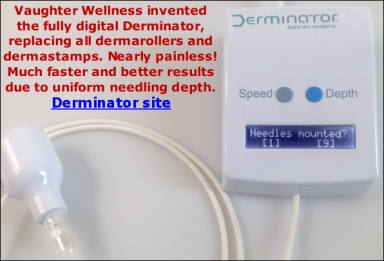Honestly, I do not even think your skin needs dermarolling because apart from the bumps your skin looks good.
Thanks. I purchased the dermarolling products a year ago with the intention of doing my back which has a minefield of scars, but I haven't had the courage to ask for assistance from a friend to help roll it. In recent months I have been insecure about my face, specifically because of the bumps, a wrinkle which appears underneath my left eye, that I thought there would be little harm from dermarolling. I was aware that it may deteriorate the skin, but whatever effects it had will likely be temporary -- and may overall improve the complexion of my skin.
Concerning the redness, have you been exposed to the sun shortly after dermarolling?
I haven't been exposed to the sun much, I work mostly in-doors. I spend probably less than an hour outdoors daily (unfortunately).
To avoid redness, you can use just a dermastamp and spot treat a few areas of your concern or dermaroll your forehead and one cheek during the same session. When the redness is gone, do the other cheek.
In retrospect this would have been a better idea. In future sessions, I think I will only spot-treat and dermastamp for incremental improvement.
Do not apply Tretinoin until the skin is healed and use a sunscreen.
Understood.
Do the bumps get smaller when you shave them with a razor blade? If they do, use regularly a razor blade shaver on your forehead and everywhere where the bumps are. Abrasive methods may work better than dermarolling in this case because the bumps are not really raised scars. Shaving the bumps off will make the skin red so do not shave it all in one go. Do just a small part of the face each time to avoid being red all over.
I have never tried before. I have always been worried that this will leave red marks for a long time. I'm willing to try on my forehead though.
I also purchased a suction pump and cups for handling my back acne. Do you think there would be any benefit to doing suction on my face
just before dermastamping? I tried the suction cups on my chest and notice that it leaves a bruise-like mark for a few days. I was thinking of doing suction on the right-side of my nose, where there is a very small ice-pick like scar. Hoping this may improve the healing time.
Thanks.





